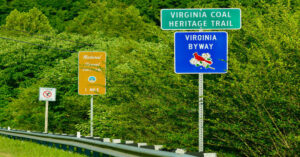Introduction
Champasari is more than just a place on the map; it is a vibrant community nestled in the foothills of the Eastern Himalayas. Situated in the Siliguri subdivision of Darjeeling district, West Bengal, India, Champasari is a blend of rural charm and urban proximity. While it might not be globally known, for those familiar with North Bengal, it is a name that evokes a rich blend of culture, tradition, and daily life shaped by the historical, economic, and geographical context of the region.
This article explores the depths of Champasari—its history, geography, social life, economy, educational system, cultural heritage, and challenges. Whether you’re a local resident looking to reconnect with your roots or a curious reader trying to understand a lesser-known part of India, this detailed account will guide you through every significant aspect of Champasari.
Geographical Setting and Landscape
Champasari is located in the Terai region of West Bengal. The Terai is a lowland area situated south of the outer foothills of the Himalayas and north of the Dooars region. Champasari enjoys a tropical monsoon climate, characterized by hot summers, a rainy season that brings relief as well as flooding, and mild winters.
What makes Champasari geographically significant is its location at the edge of a growing urban sprawl—Siliguri—while still retaining much of its rural essence. It is surrounded by tea gardens, paddy fields, and dense vegetation. The terrain is mostly flat with a few undulating patches. Nearby water bodies, small streams, and forested areas make the natural setting of Champasari unique.
The soil here is fertile, mostly alluvial, making it suitable for agriculture. The abundant rainfall supports lush greenery, which contributes not only to agriculture but also to a serene, nature-rich environment that offers both aesthetic beauty and ecological value.
Historical Background
The history of Champasari, though not extensively documented, can be traced through its association with the broader history of the Siliguri corridor and Darjeeling district. The area was originally inhabited by indigenous tribes like the Rajbanshis and later saw an influx of people from Nepal, Bihar, and other parts of Bengal due to the colonial interest in the region’s tea cultivation.
The British established tea plantations in and around Siliguri and brought in labor from tribal belts of Chhota Nagpur and Jharkhand. Champasari developed slowly during this period as a settlement area for laborers and workers associated with nearby tea gardens. It was also a small trading post and agricultural zone. Over time, the construction of roads, schools, and markets helped it grow into a semi-urban area with close ties to Siliguri.
Although Champasari has never been at the forefront of major historical events, its slow and organic development is a testament to how many smaller Indian localities have grown through migration, labor, and community building.
Cultural Diversity and Social Fabric
Champasari is a melting pot of cultures. The local population includes Bengalis, Nepalis, Biharis, Marwaris, and tribal communities. Each group has brought with it a set of traditions, rituals, food habits, and languages, creating a unique socio-cultural tapestry.
Languages Spoken
Bengali and Nepali are the most widely spoken languages, but Hindi and English are also used, particularly in schools, official dealings, and businesses. Many residents are bilingual or even trilingual, allowing for fluid communication across different groups.
Religious and Cultural Practices
Champasari has a deeply spiritual community. Hinduism is the predominant religion, but there are also Muslims, Christians, and Buddhists. Temples, mosques, and churches coexist peacefully, reflecting the secular character of the area.
Festivals like Durga Puja, Diwali, Chhath Puja, Eid, Christmas, Buddha Purnima, and Holi are celebrated with equal fervor. Cultural programs, processions, and community feasts mark these occasions, providing opportunities for inter-community bonding.
Local traditions also include folk songs, dance forms, and oral storytelling, often preserved by the older generation. The fusion of hill culture (Nepali traditions) and plains culture (Bengali and Bihari traditions) gives Champasari a unique identity.
Economic Activities
The economy of Champasari is closely tied to agriculture, small-scale trade, and the service sector. A significant section of the population is involved in farming activities, with crops like paddy, maize, vegetables, and seasonal fruits being grown in the surrounding lands. The proximity to tea gardens means some residents are employed in tea processing, plucking, and transport.
Small businesses thrive in the form of grocery stores, tailoring units, and local eateries. Over time, as Siliguri expanded, more people in Champasari found employment in urban jobs such as in retail, transport, construction, and hospitality.
There’s also a growing trend of youth migrating to other cities for better job opportunities and higher education. This has led to an increase in remittances, which is now an essential part of household incomes in many homes.
Education and Literacy
Education in Champasari has improved significantly in the last two decades. Earlier, there were only a handful of government primary schools, but now the area hosts several private and semi-private schools that offer quality education up to secondary and higher secondary levels.
The literacy rate has gone up as a result of government initiatives and community awareness programs. Still, there remains a gap in higher education, as students need to travel to Siliguri or further to pursue college and university-level studies.
Vocational training centers have also started appearing, offering skills in tailoring, computer literacy, and basic accounting, especially targeted at school dropouts and housewives.
Infrastructure and Transportation
The roads in Champasari are fairly well-developed, with connectivity to central Siliguri, which is about 4–6 km away depending on the specific locality. Shared auto-rickshaws, e-rickshaws, and cycle rickshaws are the primary means of local transport.
Public transport is supplemented by private vehicles and school vans. The nearest railway station is New Jalpaiguri (NJP), which is a major rail hub connecting North Bengal to other parts of India. Bagdogra airport is also relatively close, making air travel possible though not common among most residents.
Water supply, electricity, and mobile connectivity are satisfactory though not without occasional disruptions. Piped water has reached many households, and local panchayats or municipal wards ensure road maintenance, drainage, and sanitation to a functional level.
Health Services
Healthcare remains a work-in-progress. While there are local clinics and pharmacies, critical healthcare needs often necessitate a visit to Siliguri’s private hospitals or government facilities like North Bengal Medical College.
However, immunization drives, maternal health schemes, and family planning awareness campaigns are regularly conducted. Mobile medical vans sometimes serve remote pockets that still lack access to clinics.
Political Representation and Civic Life
Champasari falls under the Siliguri municipal jurisdiction or its extension, depending on redistricting. It has representation in both the municipal corporation and legislative assembly. People are politically aware and active, with strong affiliations to mainstream political parties in West Bengal.
Civic groups, self-help collectives, and youth clubs play an important role in organizing cultural events, sports tournaments, and social service initiatives like blood donation camps and cleanliness drives.
Local Markets and Economy
The Champasari bazaar is a bustling place that reflects the economic heartbeat of the area. From vegetables, fish, and groceries to clothes, shoes, and mobile accessories, the market is a lively arena for buyers and sellers alike. Many families rely on these markets for daily essentials and social interaction.
Weekly haats (markets) bring in traders from nearby villages, offering a more extensive selection of goods at lower prices. These events also foster social connection and community solidarity.
Challenges Faced by the Community
Despite its progress, Champasari faces several developmental challenges:
- Unemployment and Underemployment: Many educated youth are unable to find suitable employment locally and have to migrate.
- Inadequate Healthcare: The lack of a fully equipped hospital means that medical emergencies are a concern.
- Urban Encroachment: The spread of Siliguri’s urban limits threatens to consume Champasari’s agricultural land and traditional lifestyle.
- Environmental Concerns: Deforestation, unregulated construction, and water pollution from nearby towns affect the local ecology.
- Education Gap: While basic education is improving, access to higher education is still limited.
Addressing these issues requires not just government intervention but also active citizen participation, NGO support, and long-term policy planning.
The Road Ahead: Future Prospects
Champasari is poised at a critical juncture. With proper investment in infrastructure, education, healthcare, and skill development, it can evolve into a model semi-urban locality that blends rural warmth with modern amenities.
There is also potential for eco-tourism, given its natural surroundings and proximity to the Himalayas. With a more organized community effort, supported by local leadership and public-private collaboration, Champasari could be showcased as a success story in sustainable regional development.
FAQs
1. Where is Champasari located?
Champasari is located in the Siliguri subdivision of Darjeeling district, West Bengal, near the Himalayan foothills.
2. What are the main occupations in Champasari?
Agriculture, small-scale business, and jobs in nearby Siliguri’s service and retail sectors are primary occupations.
3. What languages are spoken in Champasari?
Bengali, Nepali, Hindi, and English are widely spoken in Champasari.
4. What kind of education facilities are available in Champasari?
Champasari has government and private schools, but for college education, students typically travel to Siliguri.
5. Is Champasari a good place to live?
Yes, it offers a peaceful environment, cultural diversity, and proximity to urban amenities, making it suitable for families.









